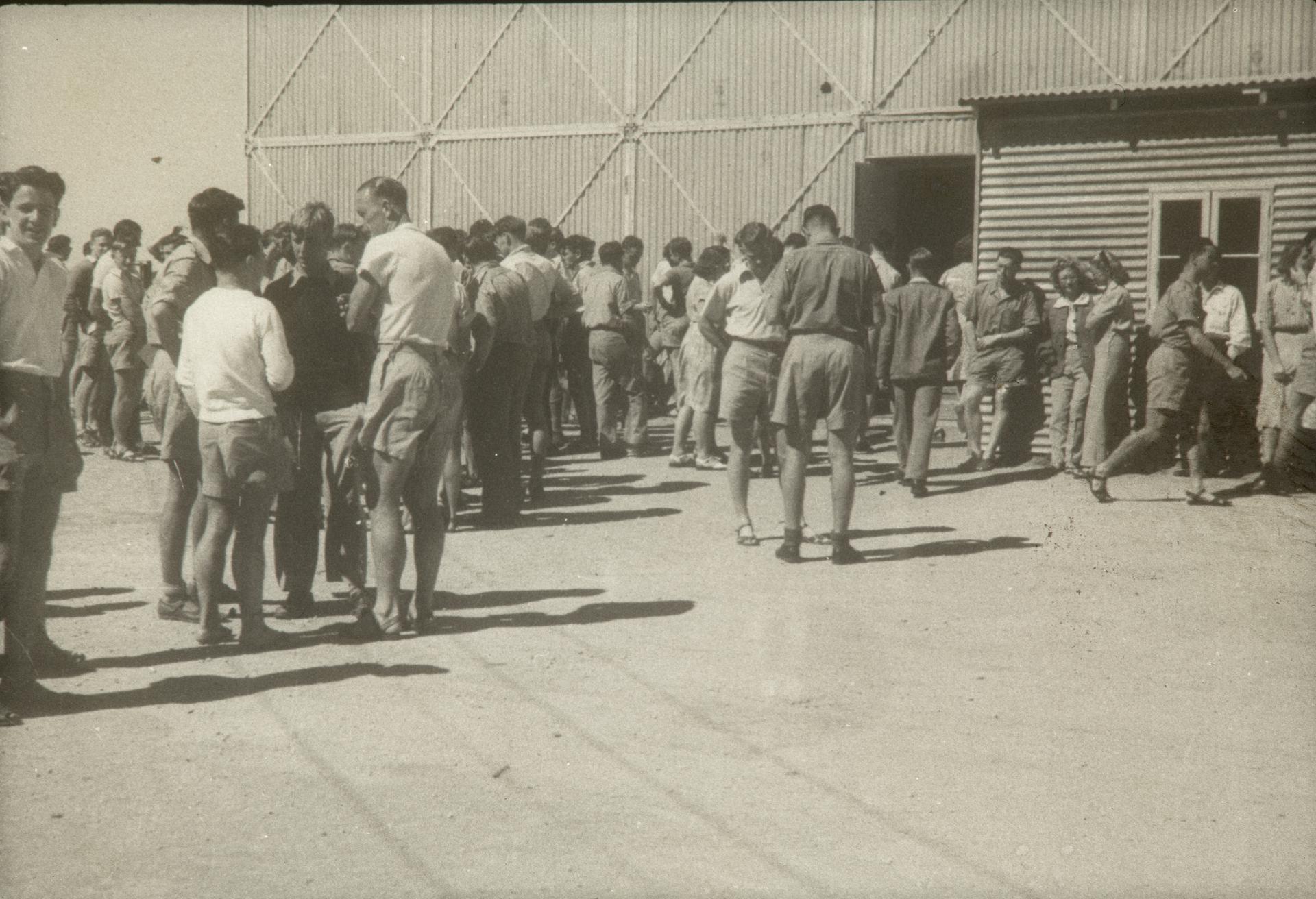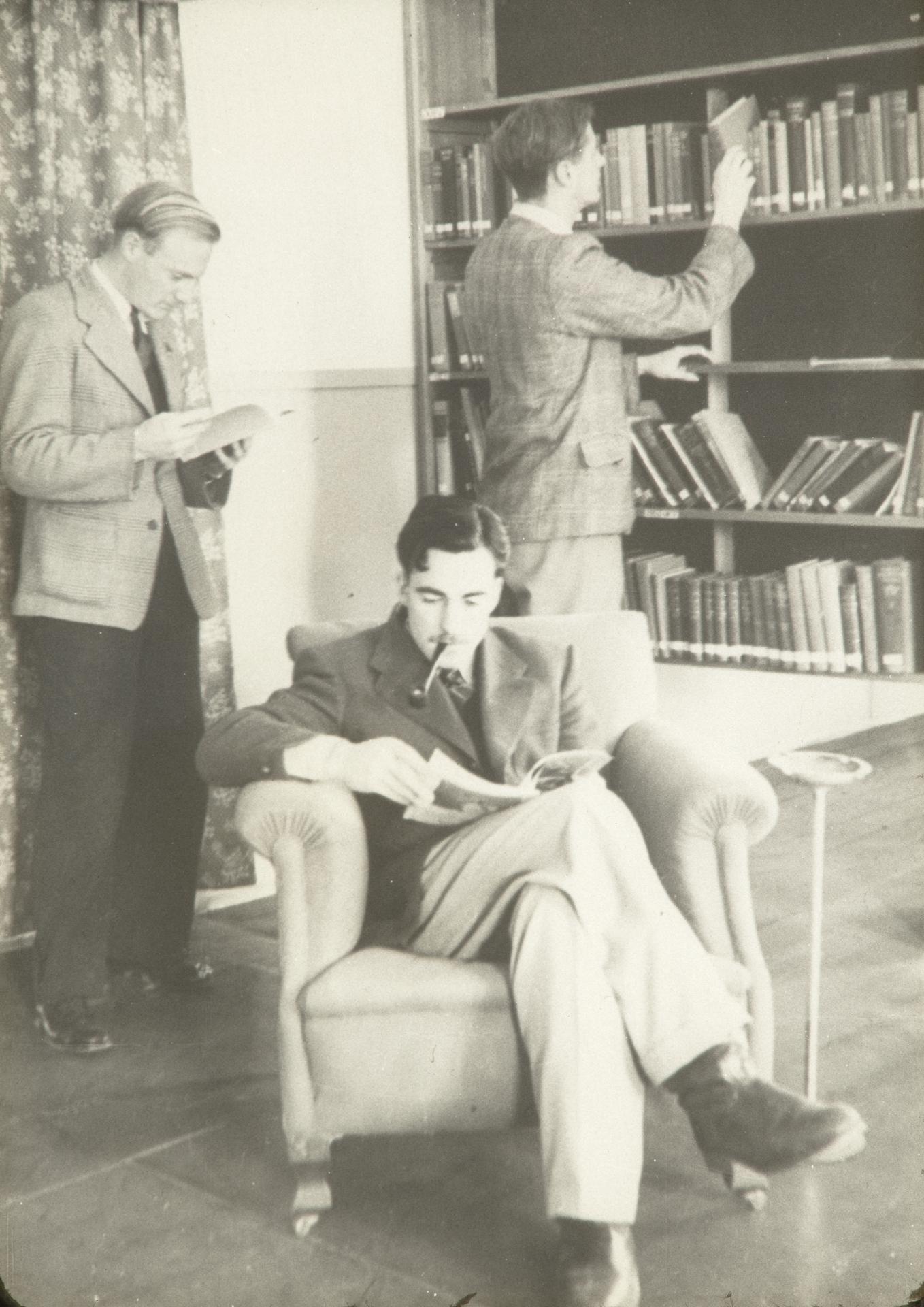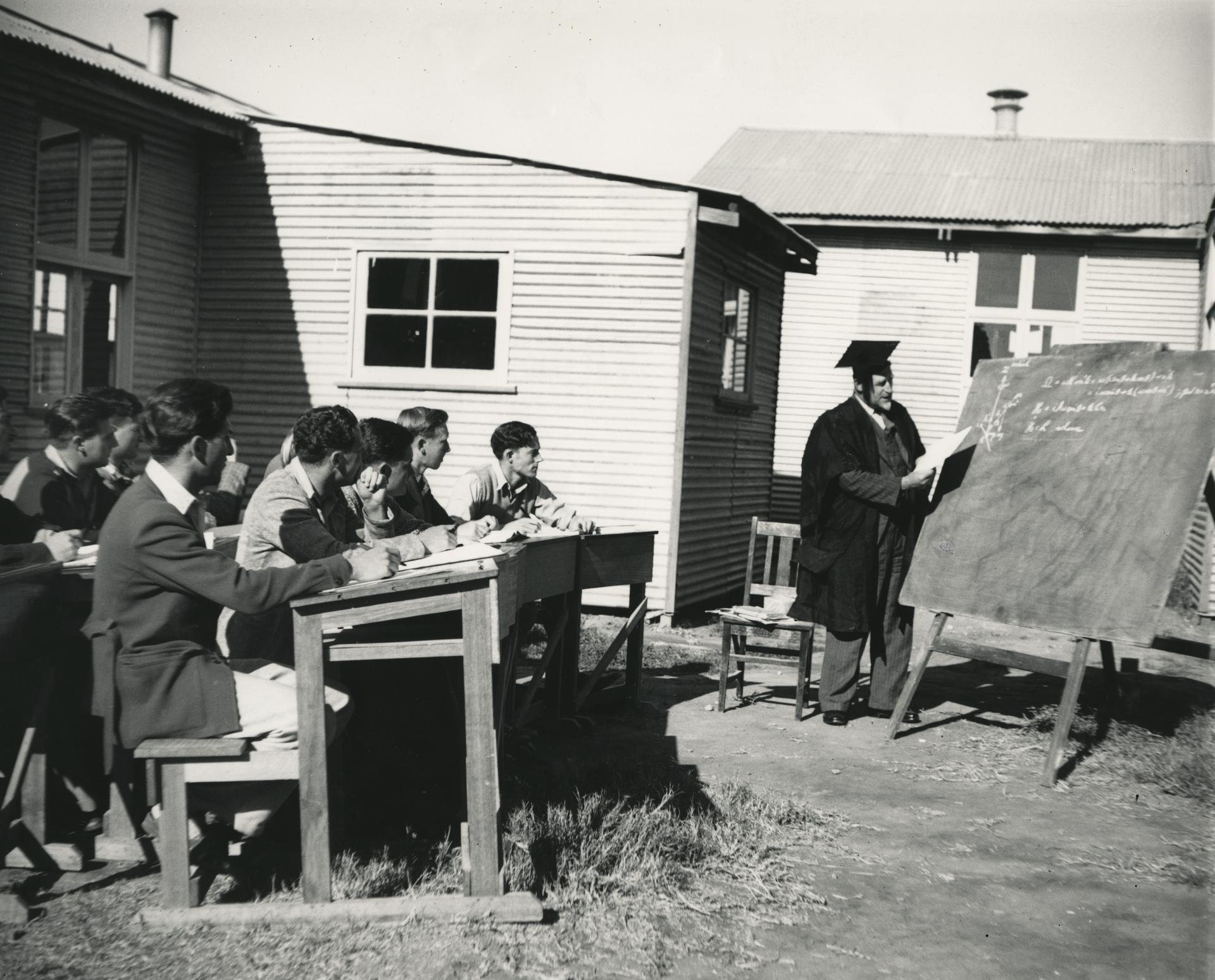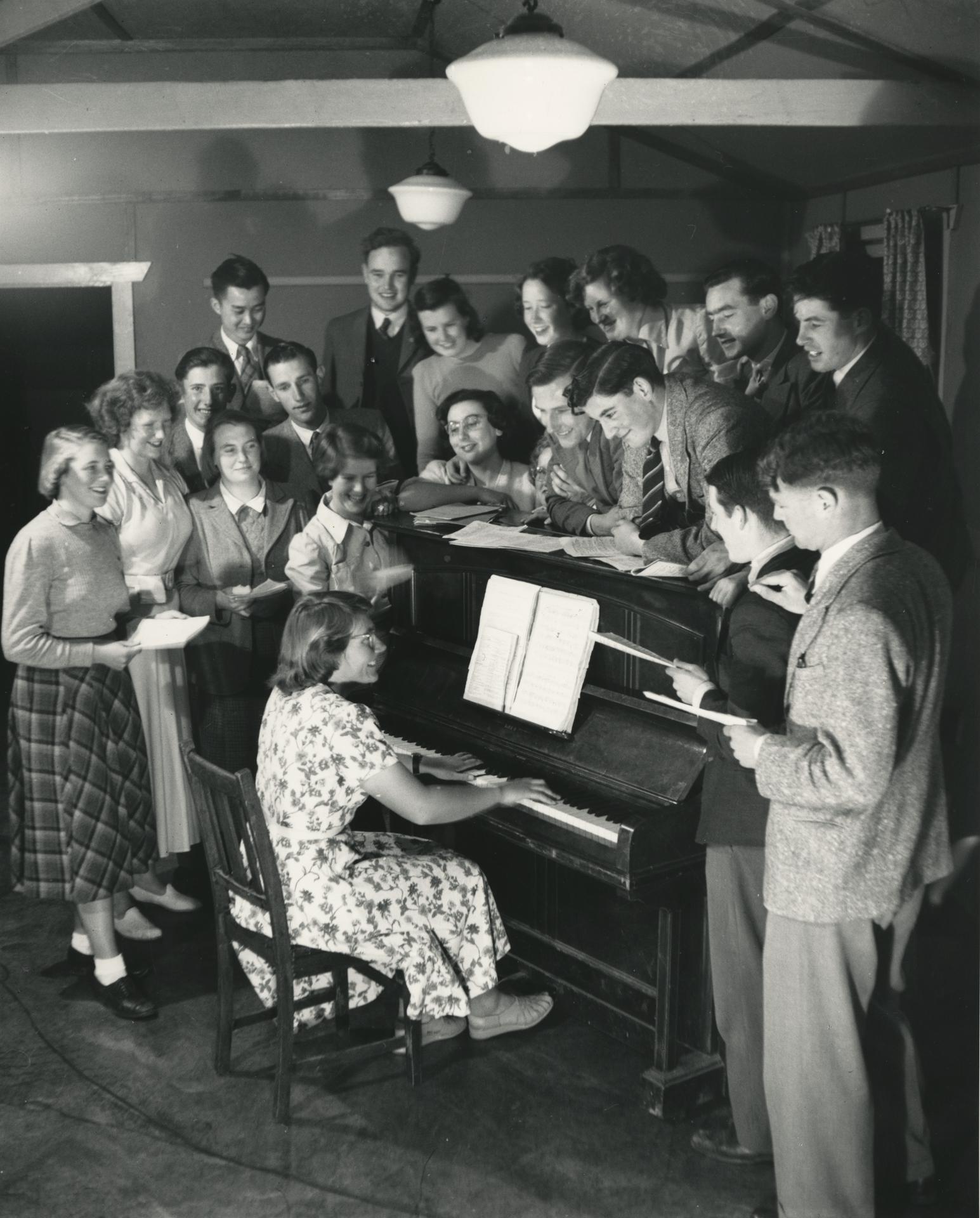Key 66: Commonwealth Reconstruction Training Scheme 1945-1949 / The Mildura Experiment 1947-1949
Well before the war was over the Commonwealth Government was planning for a new social order in which greater access to university education would play a major role. Accordingly funds and procedures under the Commonwealth Reconstruction Training Scheme (CRTS) were put in place towards the end of 1945 to facilitate the rapid retraining of returning service personnel, many of whom had put their education or training on hold for the duration of the war. Student numbers expanded dramatically (from 3,814 in 1945 to 6,206 in 1946). An accommodation crisis was barely relieved by the arrival of a multitude of army huts but the life of the University was immensely enriched. Two of the more enduring legacies of this brief period were Commonwealth Scholarships available from 1951 to enable students from a broader socio-economic background to attend University and the development of student welfare services which began with the appointment of Brigadier W. Cremor as a special adviser for ex-service students.
In the face of the near overwhelming flood of students under this scheme the University embarked on a short-lived attempt to create a regional residential campus for 600 students in a former RAAF camp at Mildura in the State’s far north west.

[Source: University of Melbourne Archives Image Catalogue, UMA-I-2049]
All first year classes in Medicine (1947-49), Engineering (1947-49), Dentistry (1947-49), Science (1948-49) and Architecture (1947) were conducted there.

[Source: University of Melbourne Archives Image Catalogue, UMA-I-2056]
Only Chemistry students stayed in Melbourne. Under the leadership of Dr J. S. Rogers, the experience was generally considered a success.

[Source: University of Melbourne Archives Image Catalogue, UMA-I-1329]
Staff and most students enjoyed the life and academic results were good, but once the bulge in student numbers created by returned service men and women receded the enterprise proved too expensive to continue. Numbers had fallen from 570 to 325 and the hopes of many that this might prove the nucleus of a rural university were dashed.

[Source: University of Melbourne Archives Image Catalogue, UMA-I-1331]